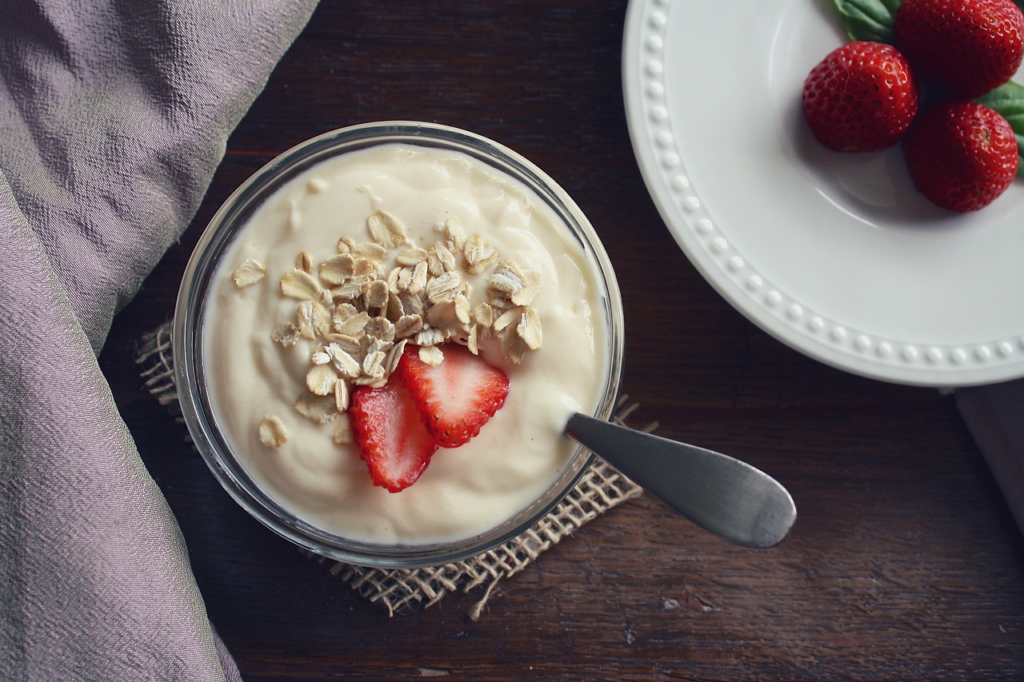what foods to help the pelvic floor muscles
Introduction
- Brief overview of the importance of pelvic floor muscles.
- Introduction to the role of diet in pelvic floor health.
- Objective of the article: Provide an in-depth guide on foods that support pelvic floor muscles.
Table of Contents
Title: What Foods to Help the Pelvic Floor Muscles: A Comprehensive Guide
Introduction
The pelvic floor muscles play a crucial role in supporting several organs, including the bladder, intestines, and, in women, the uterus. These muscles are integral to functions such as bladder and bowel control, sexual health, and even childbirth. Despite their importance, pelvic floor muscles are often overlooked until problems arise. Weak pelvic floor muscles can lead to issues such as incontinence, pelvic organ prolapse, and chronic pelvic pain, significantly impacting quality of life.
While exercises are frequently recommended to strengthen these muscles, diet also plays a pivotal role in maintaining their health and functionality. Certain foods can enhance muscle strength, improve tissue repair, and support overall pelvic floor function. This comprehensive guide aims to provide detailed insights into the best foods to help the pelvic floor muscles, helping you to integrate them into your diet for better pelvic health.
Understanding the Pelvic Floor Muscles
The pelvic floor is a group of muscles and ligaments that form a sling across the base of the pelvis. These muscles support the pelvic organs and help control the bladder and bowel. They are also involved in sexual function and play a critical role during childbirth.
Anatomy and Function
The pelvic floor muscles include the levator ani group (pubococcygeus, puborectalis, and iliococcygeus muscles) and the coccygeus muscle. These muscles stretch from the pubic bone at the front to the tailbone (coccyx) at the back, and from one sitting bone (ischial tuberosity) to the other.
Common Issues Related to Weak Pelvic Floor Muscles
Weak pelvic floor muscles can lead to several health issues, including:
- Incontinence: The inability to control bladder or bowel movements.
- Pelvic Organ Prolapse: When pelvic organs drop from their normal position.
- Chronic Pelvic Pain: Persistent pain in the lower abdomen or pelvis.
How Lifestyle and Diet Impact Pelvic Floor Health
Factors such as pregnancy, childbirth, aging, and obesity can weaken the pelvic floor muscles. However, lifestyle choices, including diet, can also significantly impact these muscles’ strength and functionality. A balanced diet rich in specific nutrients can enhance muscle strength, improve tissue repair, and support the overall function of the pelvic floor.
Importance of Nutrition for Pelvic Floor Health
Nutrition is fundamental to muscle health. A diet rich in proteins, vitamins, minerals, and antioxidants can help maintain strong pelvic floor muscles. Here are some key nutrients and their roles in pelvic floor health:
Key Nutrients for Muscle Health
- Protein
- Role: Essential for muscle repair and growth.
- Sources: Lean meats, fish, eggs, dairy, legumes, nuts, and seeds.
- Magnesium
- Role: Crucial for muscle relaxation and function.
- Sources: Leafy greens, nuts, seeds, whole grains, and legumes.
- Antioxidants
- Role: Help reduce inflammation and promote tissue repair.
- Sources: Berries, nuts, seeds, and colorful fruits and vegetables.
- Vitamin C
- Role: Important for collagen production and tissue repair.
- Sources: Citrus fruits, berries, peppers, and leafy greens.
- Fiber
- Role: Helps prevent constipation, reducing strain on pelvic floor muscles.
- Sources: Whole grains, fruits, vegetables, and legumes.
- Probiotics
- Role: Promote gut health, which indirectly supports pelvic floor health.
- Sources: Yogurt, kefir, sauerkraut, and other fermented foods.
Top Foods to Strengthen Pelvic Floor Muscles
Lean Proteins
Importance of Protein in Muscle Health
Proteins are the building blocks of muscles. They are made up of amino acids, which are essential for muscle repair and growth. Consuming adequate protein can help maintain and strengthen pelvic floor muscles, supporting overall pelvic health.
Detailed List of Lean Protein Sources and Their Benefits
- Chicken: A great source of lean protein that is low in fat and rich in essential amino acids.
- Turkey: Similar to chicken, turkey provides high-quality protein with low-fat content.
- Fish: Fish like salmon and tuna are not only high in protein but also rich in omega-3 fatty acids, which have anti-inflammatory properties.
- Tofu: A plant-based protein that is versatile and rich in essential amino acids.
- Legumes: Beans, lentils, and chickpeas are excellent sources of protein and fiber.

Scientific Studies Supporting Protein Intake for Muscle Health
Research has consistently shown that protein intake is crucial for muscle health. A study published in the Journal of the International Society of Sports Nutrition highlighted the importance of protein in muscle repair and growth, especially when combined with resistance training.
Leafy Greens
Role of Magnesium in Muscle Function
Magnesium is vital for muscle function, including muscle contraction and relaxation. It also plays a role in nerve function, energy production, and bone health.
Specific Benefits of Different Leafy Greens
- Spinach: High in magnesium, iron, and vitamins A and C.
- Kale: Packed with vitamins A, K, and C, as well as calcium and magnesium.
- Swiss Chard: Rich in magnesium, potassium, and vitamins A and C.
Recipes and Ways to Incorporate Leafy Greens into Your Diet
- Smoothies: Blend spinach or kale into your morning smoothie for a nutrient boost.
- Salads: Add a variety of leafy greens to your salads.
- Sauteed Greens: Sauté Swiss chard with garlic and olive oil for a delicious side dish.
Berries
Antioxidant Properties and Their Impact on Inflammation
Berries are rich in antioxidants, which help reduce inflammation and promote tissue repair. Antioxidants neutralize free radicals, which can damage cells and contribute to chronic inflammation.
Different Types of Berries and Their Unique Benefits
- Blueberries: High in antioxidants, fiber, and vitamins C and K.
- Strawberries: Rich in antioxidants, vitamin C, and manganese.
- Raspberries: Packed with fiber, vitamins C and K, and antioxidants.

Scientific Evidence Supporting Berry Consumption for Muscle Health
A study published in the Journal of Agricultural and Food Chemistry found that the
antioxidants in berries help reduce muscle damage and inflammation, promoting muscle recovery and health.
Nuts and Seeds
Nutritional Profile of Various Nuts and Seeds
Nuts and seeds are packed with healthy fats, protein, fiber, and essential vitamins and minerals.
Benefits of Healthy Fats and Magnesium
- Healthy Fats: Essential for hormone production and cell membrane health.
- Magnesium: Supports muscle function and relaxation.
Tips for Including Nuts and Seeds in Your Daily Diet
- Snacks: Enjoy a handful of nuts or seeds as a snack.
- Smoothies: Add chia seeds or flaxseeds to your smoothies.
- Salads: Sprinkle nuts or seeds on top of salads for added crunch and nutrition.
Citrus Fruits
Vitamin C and Its Role in Collagen Production
Vitamin C is crucial for collagen production, which is important for tissue repair and muscle health. Collagen is a structural protein that helps maintain the integrity of muscles, skin, and connective tissues.
Benefits of Different Citrus Fruits
- Oranges: High in vitamin C, fiber, and antioxidants.
- Grapefruits: Rich in vitamin C, fiber, and antioxidants.
- Lemons: Provide vitamin C and antioxidants, and are a great way to add flavor to water and dishes.
Creative Ways to Add Citrus Fruits to Your Meals
- Juices: Freshly squeezed orange or grapefruit juice.
- Salads: Add orange or grapefruit segments to salads.
- Water: Infuse water with lemon slices for a refreshing drink.
Whole Grains
Importance of Fiber in Preventing Constipation
Fiber is essential for digestive health and preventing constipation, which can strain the pelvic floor muscles. Whole grains provide a good source of dietary fiber.
Benefits of Whole Grains Over Refined Grains
Whole grains retain all parts of the grain, providing more nutrients and fiber compared to refined grains.
Examples of Whole Grains and How to Prepare Them
- Oats: A versatile grain that can be used in porridge, smoothies, and baking.
- Quinoa: A protein-rich grain that can be used in salads, soups, and as a side dish.
- Brown Rice: A nutritious alternative to white rice, high in fiber and minerals.

Yogurt
Probiotics and Their Role in Gut Health
Probiotics are beneficial bacteria that promote a healthy gut microbiome, which can indirectly support pelvic floor health.
Different Types of Yogurt and Their Benefits
- Greek Yogurt: High in protein and probiotics.
- Kefir: A fermented dairy product rich in probiotics.
- Regular Yogurt: Provides calcium, protein, and probiotics.
Ways to Incorporate Yogurt into Your Diet
- Breakfast: Enjoy yogurt with berries and nuts for breakfast.
- Snacks: Have a serving of yogurt as a mid-day snack.
- Smoothies: Blend yogurt into smoothies for a creamy texture and added nutrition.

Sample Diet Plan for Pelvic Floor Health
Breakfast
- Option 1: Greek yogurt with berries and chia seeds.
- Option 2: Oatmeal topped with nuts, seeds, and fresh fruit.
Lunch
- Option 1: Quinoa salad with spinach, grilled chicken, and citrus dressing.
- Option 2: Whole grain wrap with turkey, avocado, and mixed greens.
Snack
- Option 1: A handful of almonds and an apple.
- Option 2: Carrot sticks with hummus.
Dinner
- Option 1: Baked salmon with steamed kale and brown rice.
- Option 2: Tofu stir-fry with mixed vegetables and quinoa.
Nutritional Breakdown of Each Meal
Provide detailed nutritional information for each meal option, highlighting the key nutrients that support pelvic floor health.
Tips for Meal Prep and Maintaining a Balanced Diet
- Plan Ahead: Prepare meals in advance to ensure a balanced diet throughout the week.
- Variety: Include a variety of foods to ensure you get all essential nutrients.
- Portion Control: Be mindful of portion sizes to maintain a healthy weight.
Additional Tips for a Healthy Pelvic Floor
Stay Hydrated
Adequate water intake is crucial for muscle function and overall health. Dehydration can lead to muscle cramps and constipation, both of which can strain the pelvic floor muscles.
Avoid Excessive Caffeine and Alcohol
Caffeine and alcohol can irritate the bladder and affect pelvic floor function. Limiting their intake can help maintain a healthy pelvic floor.
Exercise Regularly
Incorporate pelvic floor exercises, such as Kegels, into your routine to strengthen these muscles. Regular physical activity also helps maintain overall muscle health and body weight.Body Composition Exercises You Need to Try : Unlock Your Fitness Potential
Maintain a Healthy Weight
Excess weight can put additional pressure on the pelvic floor muscles. A balanced diet and regular exercise can help achieve and maintain a healthy weight.
Lifestyle Changes to Support Pelvic Floor Health
- Quit Smoking: Smoking can weaken connective tissues and affect overall health.
- Manage Stress: Stress can lead to muscle tension and impact pelvic floor health. Practice relaxation techniques such as yoga and meditation.
- Regular Check-ups: Regular visits to a healthcare provider can help monitor and manage pelvic floor health.
Conclusion
Incorporating the right foods into your diet can significantly improve the strength and function of your pelvic floor muscles. By focusing on nutrient-rich foods such as lean proteins, leafy greens, berries, nuts and seeds, citrus fruits, whole grains, and yogurt, you can support your pelvic health and overall well-being. Combined with regular exercise and healthy lifestyle choices, these dietary changes can make a profound difference. Start today by making small changes to your diet and feel the difference in your pelvic floor strength and functionality.



